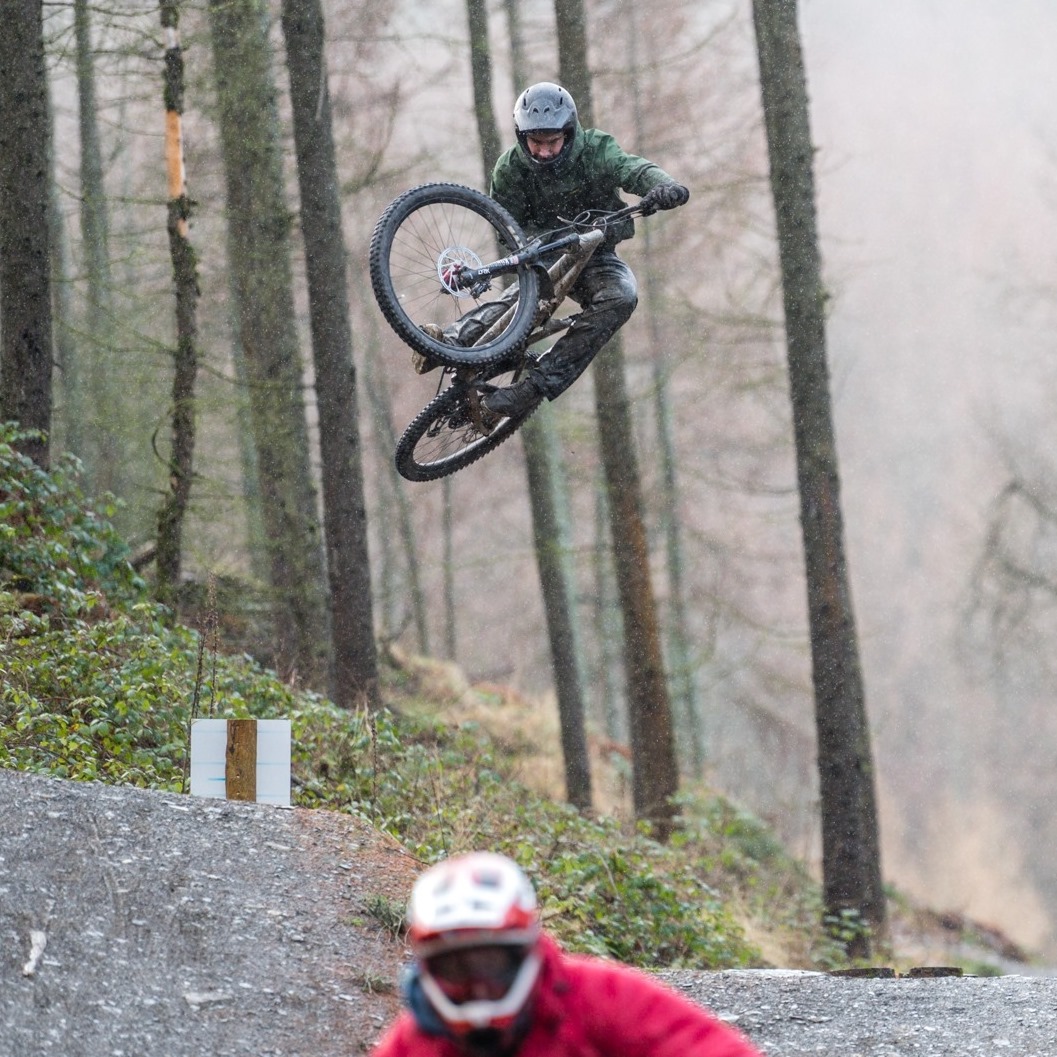How To Clean A Mountain Bike?
/ Tips / How To Clean A Mountain Bike?
Cleaning your mountain bike right after your ride might seem like a chore. But if you do it regularly your bike will perform very well when riding and you won’t have to deal with any hiccups. Besides, cleaning your bike doesn’t have to take much time if you know exactly what you’re doing.
If you are a newbie and looking for some advice on how to clean your mountain bike, you have certainly come to the right place. We will list down some important steps that you need to take to clean your bike and get it ready for the next challenge.

Get Your Wash Area Ready
First things first, you must find the right spot to wash your bike comfortably. Make sure that you look for a place with a good drainage system. Also, ensure that you use a well-made bike stand for this purpose. Having your bike hanging in the air will work better and make it easier for you to clean. Bike stands like the Bikehand Bike Repair Stand or the BIKEHAND Bicycle Floor Stand will make it much easier.
You need to choose an area to wash your bike and be sure that it is safe from wind and rain. Don’t go for a pressure washer because it can take off any grease that is essentially required on the bearings and can further lay waste to the suspension system.
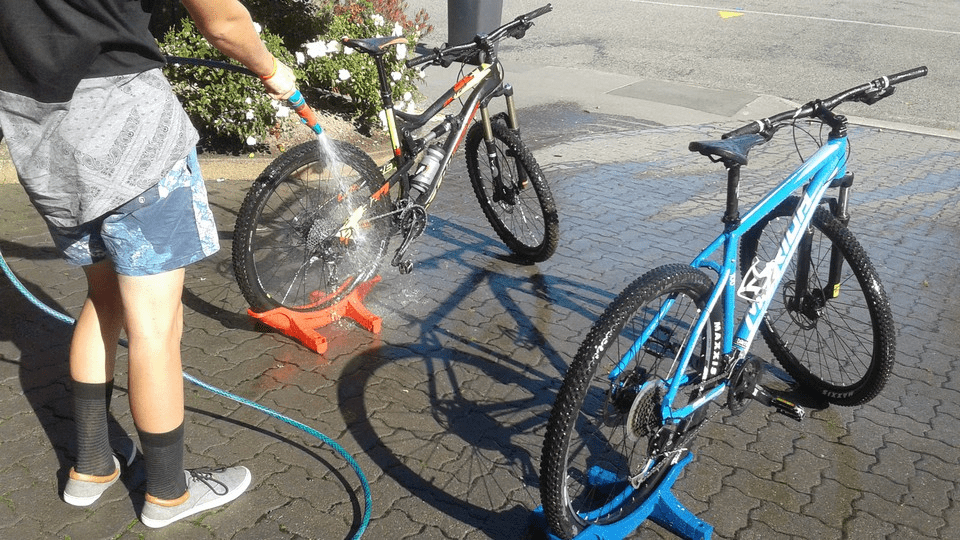
Get Your Equipment Ready
You need to first assemble the bike stand. A 360-degree rotating bike stand would be an ideal choice. It will allow you to rotate your bike as you wash it. You won’t have to change your position as you clean both sides of your bike. A floor stand will be great too. Also, a bright-colored bucket will be required which can show you any amount of grease or oil residue. The Finish Line Pro Care Bucket Kit has the bucket and cleaning supplies.
You further need to have a couple of brushes like the Park Tool Cleaning Brush Set. One of them must be hard while the other should be soft. A hose that is directly connected to the cold water is necessary along with some cleaning products. Make sure that you don’t go with any car cleaning products because such products will be extremely harsh for the parts and components of your bike.
Get To Rinsing and Foaming
It’s time to mount your MTB on its stand and start rinsing by using cold water. Begin the process from the top of your MTB and remove layers of debris by washing your bike. Now, take your bucket and fill it with warm water.
Take your soft brush and start applying the washing liquid to it. Make sure that it doesn’t contain any dirt or grit. Foam your whole bike by starting from the top and working all the way downwards. This will help you avoid any dirt dribbles on the parts that you have cleaned already.
This is the best way to clean a mountain bike. Use your soft brush and start rinsing the frame. Look for those small areas and try to reach as far as you can, to get rid of any grime or dirt. Be cautious that you don’t leave any spots. Another great product to try is MUC-OFF where you can spray it on and wash off after 3-5 minutes.
Get To The Drivetrain And Tires
For the drivetrain and tires, you will use the harder brush and apply the cleaning liquid directly to it. Start scrubbing the brush onto your tires as well as rim. You need to inspect the tires for any cuts or thorns in your tires. You might see soap bubbles coming out if you have a hole in your tire.
Get it fixed and then move onto the drivetrain along with the cassette. Examine well if there are any twigs, grass or debris caught up in the cogs of your mountain bikes drivetrain. You can get rid of them using your hard brush. Make sure that you don’t use a degreaser for this purpose. You can only use it if you have removed the cassette from the hub body.
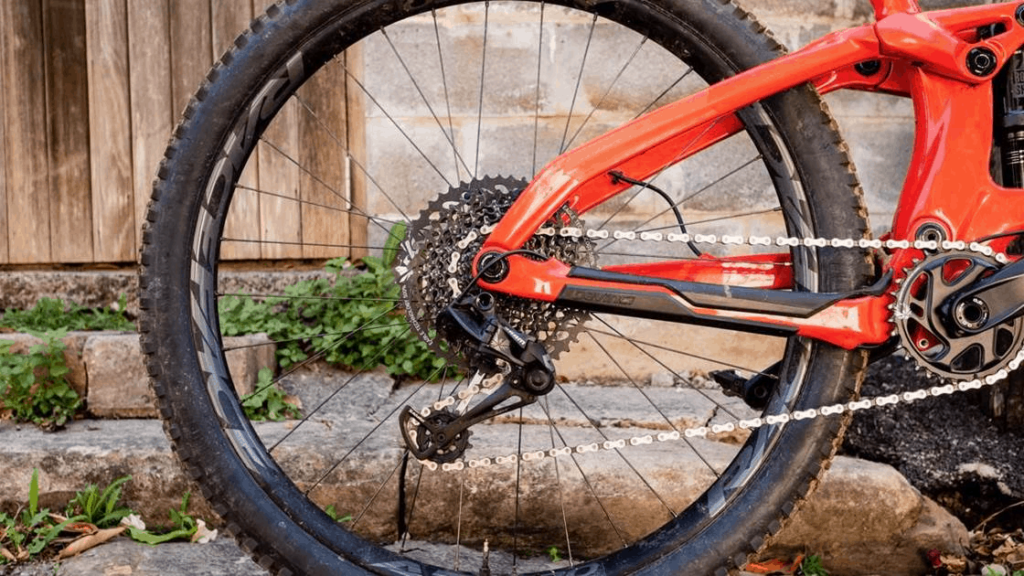
If you are worried about how to clean a mountain bike chain, use a hard brush, and thoroughly go through the chain and keep on spinning the pedal and the chain. If you don’t get it done in the first go you can always rinse and wash it again. After all, you are here to get your bike clean for good. Another great product for cleaning your chain is the Park Tool Chain Cleaning System that runs the chain right through it.
If your bike has disc brakes and you are thinking about how to clean disc brakes on a mountain bike, then the process is simple. Just make sure that you use isopropyl alcohol like Finish Line Bicycle Disc Brake Cleaner to clean your disc brakes to get rid of any contaminants. Also, wear gloves when you clean your disc brakes because you don’t want to infect the brake pads as well as your hands.
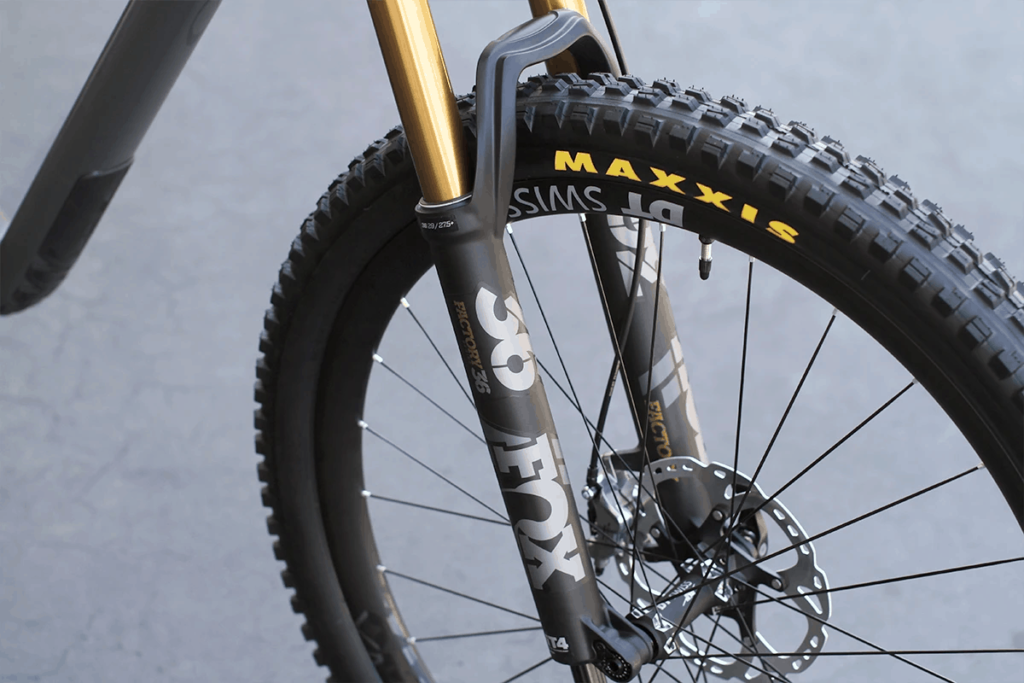
Rinsing and Inspection
With the help of the hose, rinse your MTB using a soft brush starting from the top to bottom. Make sure you examine the bike frame and see if there is any damage that has occurred to the frame. You can also rotate the pedals and allow water to pass freely right through the chain links. The slack in the chain will allow you to clean your bike thoroughly.
It’s Time To Repeat The Entire Process
Since you’re done cleaning your bike thoroughly once, there are times when you need to clean it again. Based on how dirty your bike is, you can run the entire process once again from step 1 to 5. Your mountain bikes chain rig and jockey wheel might hold some excess dirt and grime.
It might lead you to carry on the process again while specifically focusing on this region of your bike. Also, make sure that you clean those suspension seals prudently because any grit damage can be very expensive. Place your heels back in place appropriately if you had removed them.
Give It A Rinse Once More
It’s time to rinse the bike once again and make sure that you do it methodically. Make sure that none of the cleaning liquids or soaps remain on the components along with any muck or stain. Assure that you don’t use a pressure washer for this purpose because it can be very damaging for the mechanisms of your bike. Using a soft brush and free-flowing water produces great results. So make sure that you only use a hose to clean your bike.
Time To Dry Your Bike
It’s time to remove the bike from its stand and get to the drying part. You can allow your bike to stand under the sun and dry completely. It will allow any setting water to either drip or vaporize. If you are looking to get rid of any excess water then do it by using a lint-free paper towel or cloth.
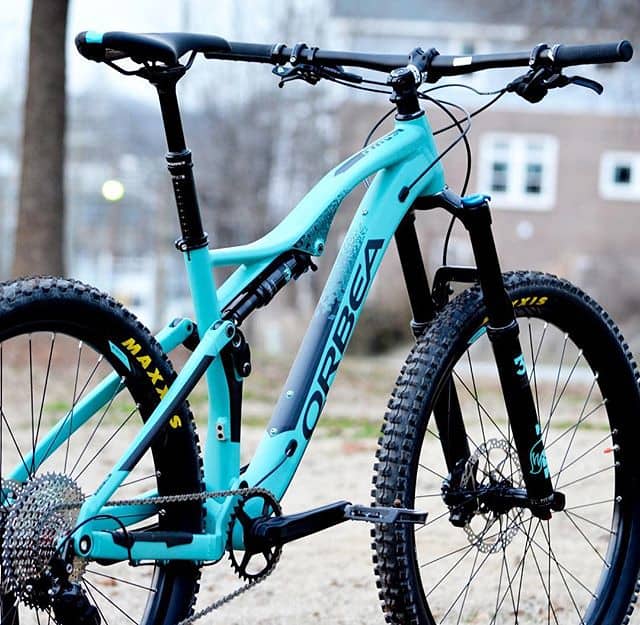
Polishing
When it is completely air-dried, apply polish on it. For this purpose, you have to bring it back on the stand and start applying silicone polish with the help of a microfiber towel. This polish doesn’t allow mud to stay on the frame and other integral parts of your MTB. Hence, you can use your bike even on muddy roads without worrying.
Safeguard your bike by applying the polish with the help of a soft towel, or else, the direct application might cause over-spraying. Consequently, the chemicals present in the polish may damage the rotors or brake pads. Use lubricants that are made for the suspension, you can use Finish Line fork oil for the fork system of your bike. You can also use the Finish Line Lube to lubricate your drive train as well and get it ready for storage or next use.
Storage
The ideal storage position for your MTB is front wheel up with the help of a hook. It keeps the brake levers higher than the calipers. The fork oil will also sit on the foam seals and they will remain moist for immediate smooth action. This position also gets any water out of the MTB’s system.
8 Tips of Advice
Here are 8 tips of advice on how to clean a mountain bike and maintain it properly to ensure its longevity.
1. Get It Dirty First!
First of all, folks, make sure that you get your mountain bike dirty before you take out your scrubs and start working on it. Some people think that you need to treat your MTB like a Rolls Royce. Well…! You need to show some love to your steed but it’s rugged and you don’t need to clean it from time to time. By doing so you will do more harm than good.
2. Put Your Bike On The Stand
It would be a lot easier for you to work around your bike during the cleaning process when you put it on the bike stand. Cleaning a grounded bike can be slightly difficult and you will have to make some extra effort to clean it.
3. Find A Proper Washing Area
Make sure that you find a proper washing area where you can freely clean your MTB meticulously. The drainage system of that place needs to be 100% secure and in order. There shouldn’t be many things around that can get the dribbles from your bike.
4. Choose A Large and Soft Brush For The Frame
You need to be sure that the brush you will be using on your frame must be large and is soft. With thick and soft bristles, you can clean your frame more effectively. Don’t use a hard brush on your frame or it will scratch and damage.
5. Go For A Smaller and Harder Brush For The Other Components
Assure that you choose smaller and harder brushes if you are looking to clean your drivetrain, tires, and other similar parts and gears. A harder brush will be more effective to fight soot and easier to reach those smaller areas.
6. The Drivetrain Is Your Mountain Bikes Achilles Heel
Make sure that you show this section of your bike some love because it will make or break your MTB when you are riding. Cleaners will be a good idea to use on that cake top of your cassette. However, you will have to be sure that the jockey wheel and the chainring is clean to keep the entire system working smoothly.
7. Bump The Bike Side-To-Side To Get Rid of Water
There are times when allowing your bike to air dry doesn’t get the water out from those hard-to-reach places. When this is the case, you need to bump your bike side to side a few times to make sure that no water remains in the smaller areas to prevent rusting and corrosion.
8. Proper Lube Job
When you have found out that your bike is completely air-dried, execute a full lube job. And you have to be very comprehensive with it. No integral parts of your bikes need to be remained exposed if you want to prevent your bike from rust and corrosion.
Check out this video from GMBN to watch how it’s done!
Final Word
Your mountain bike is a mud monster, but that doesn’t mean mud is not going to damage it if you don’t clean or maintain it well. “How to clean your mountain bike,” is a topic that needs some attention because most people think that MTBs don’t need much maintenance.
These bikes have to fight with mud and muck all day. Therefore, they need more attention. When you spend some time cleaning them, these bikes perform very well. Therefore, you must pay attention to the entire cleaning process.
If you do a lot of mountain biking then cleaning it daily would be a good idea, if you do it every week then just get it done right after you have returned to the trail. Keeping it tidy, makes it keep going for a long time. Otherwise, you will end up changing your mountain bike just after a couple of years.
Ensure, you have proper tools at hand to get through the cleaning process. If you don’t allow it to get massively dirty, it will keep working and you don’t have to spend much time cleaning it either. That is why it is better to get to the process right after you come back from a ride. But do not panic if your bike is dirty. Just a few specks of dirt here and there won’t matter. After all, it’s a mountain bike people!
Below is a Pinterest friendly photo… so you can pin it to your Mountain Bike Board!
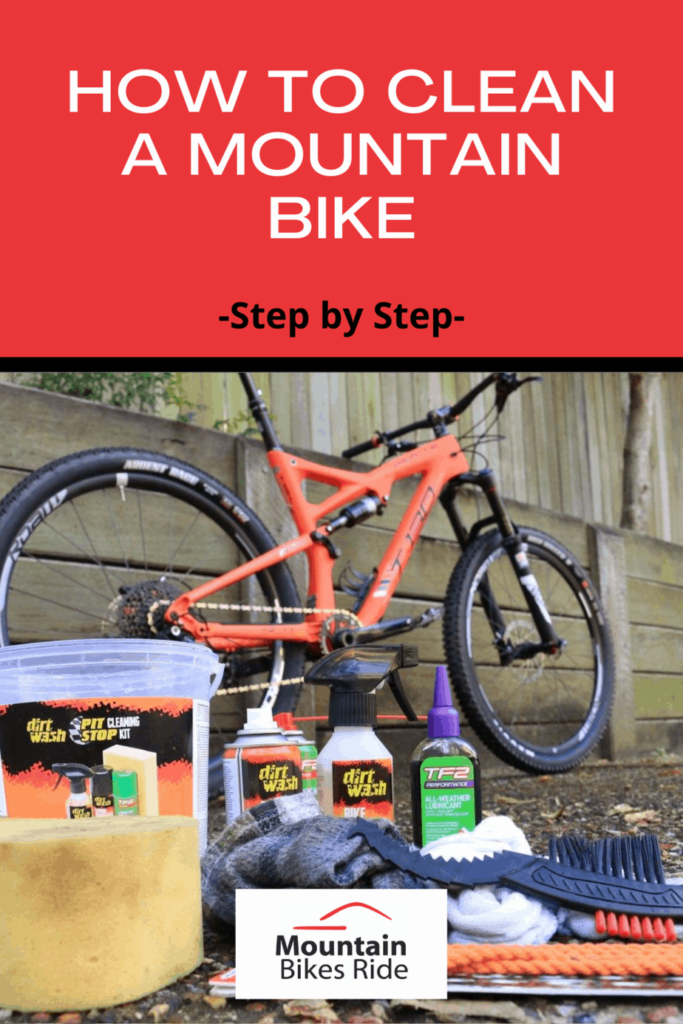
Related Articles
What Does Travel Mean On A Mountain Bike?
Oli L • March 22, 2022
When you start mountain biking you will hear the term "travel" quite a bit. But what the heck is travel and what does it have to do with mountain biking? "Hey, dude, how much travel do you have on your front fork". This is something you will hear often and it's referring to how much suspension you have on your bike. Travel on a mountain bike is the distance you...
What Is A Mountain Bike Dropout?
Oli L • March 1, 2022
The Mountain bike dropout is not a topic of most conversations when it comes to mountain biking. These components are located on the fork-end and features a section in the frame or the fork, where the wheel can quickly be loosened and removed in the need of a wheel change. In more technical terms, it refers to a slot located in the rear axle of the mountain bike, that allows...
How to Manual on a Mountain Bike
Oli L • November 9, 2021
When you're cruising on a mountain bike or pacing through a trail, you face different problems. One such problem is the obstacles that you face while conquering trails. To overcome these obstacles, there's a popular skill that is known as a manual. With a manual, you can pass over these obstacles in style and comfort. And like every skill, this mountain biking skill requires practice. Because without practice, even if...
How To Clean Disc Brakes on A Mountain Bike
Oli L • October 21, 2021
Want to learn how to clean disc brakes on a mountain bike? Here you’ll find out what you can use to clean your mountain bike disc brakes, how to detach the disc brakes and their entire cleaning in your garage. Mountain Bike Disc Brake Cleaning Overview You can clean your mountain bike disc brakes after removing your wheels, wiping those brakes with brake cleaner and a clean rag. You can...
Hydraulic Disc Brakes Vs. Mechanical Disc Brakes
Oli L • September 9, 2021
One of the most common topics in the biking world is "hydraulic disc brakes vs. mechanical disc brakes." And so it should be because most of the bikes either come with hydraulic disc brakes or mechanical ones. Hydraulic disc brakes are the dominant of the two. These brakes are complex but reliable. However, mechanical brakes are under-performing but straightforward than their counterparts. So, which one will be better for your...
Latest Articles
Popular Articles
Product Of The Week
Monday 2nd June
